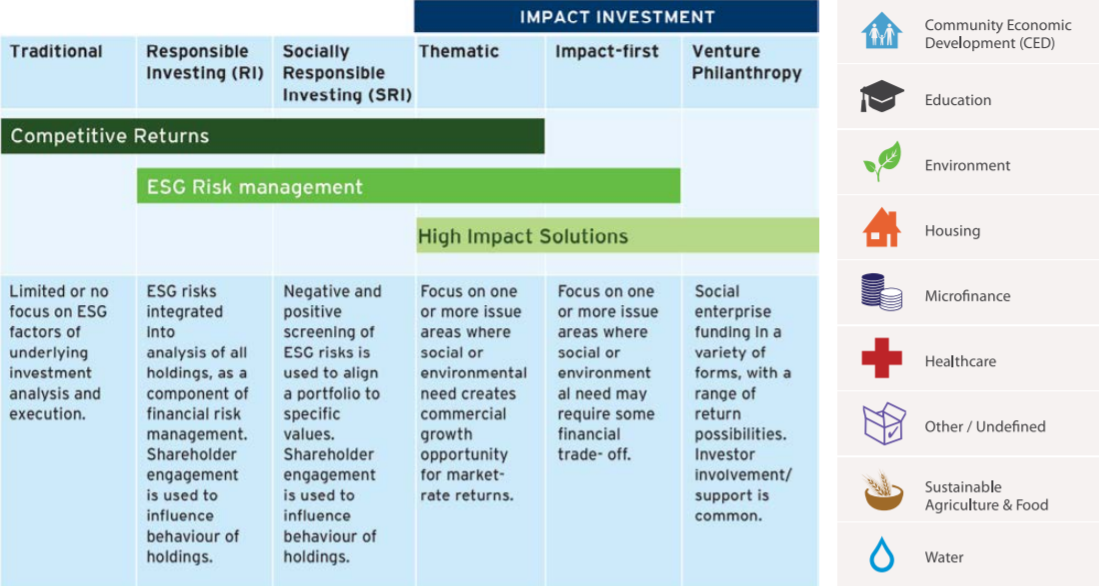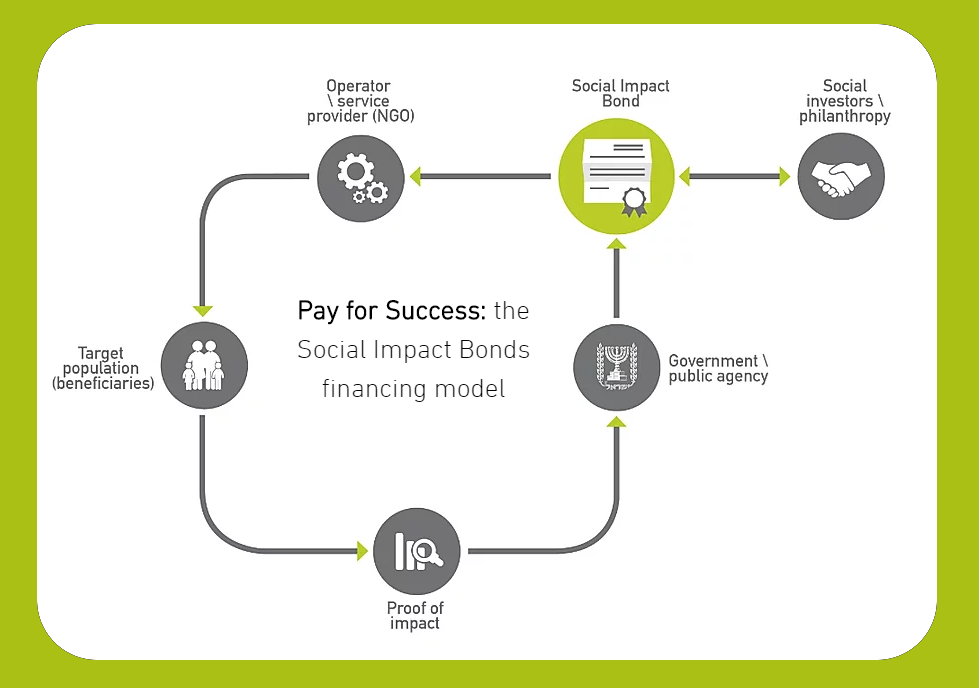International developments
Although the concept of linking private capital to societal improvement has been around for decades in many jurisdictions, three countries are on the leading edge of social innovations and social finance models:
United Kingdom (UK)
The UK is the world leader in the development of social finance. Since introducing the world’s first social impact bond (SIB) in 2010 – a prevention program to reduce recidivism among Peterborough Prison inmates – the UK has launched 14 national and local SIB projects that target a range of societal issues including “chaotic” families and homelessness. With its “Future for Children” bond, the UK was also the first country to present a public offer for investment in a SIB.
The UK is home to “Big Society Capital,” a social investment bank started by the government to help grow the social investment marketplace, as well as a public company titled simply “Social Finance” that has a similar goal. It has supported the creation of several social investment funds including the Centre for Social Action’s Innovation Fund (£14 million), the Social Outcomes Fund (£20 million) and the Department of Work and Pensions Innovation Fund (£30 million).
The UK is also seeking to improve its legal and administrative environment for social innovation projects by reviewing its Charities Act and making amendments to financial services legislation. In June 2013, the UK will host a G8 Social Impact Investment event in London to discuss, among other issues, the role of social finance in the economic recovery at national and international levels.
United States
To lead the work on social finance, the White House established the Office of Social Innovation and Civic Participation, whose role includes working with the Social Innovation Fund, a grant program that helps non-profits expand effective programs. The 2014 Budget proposed by President Obama (Budget of the United States Government 2014) also included $495 million for “Pay for Success” pilot projects in areas such as job training, housing and education as well as an incentive fund for state and local governments.
A recidivism SIB is underway in New York City, and two other SIBs in the areas of chronic homelessness and juvenile justice are being negotiated in Massachusetts. In California, a demonstration project to test a health impact bond is being launched to address chronic asthma and reduce associated hospital visits by young children. The Harvard Kennedy School has created a SIB Technical Assistance Lab offering pro-bono assistance to states and local governments considering the Pay for Success model. A number of other states and municipalities (e.g., Philadelphia, Utah, Cook County) are also examining how Pay for Success approaches may work in those jurisdictions.
Australia
New South Wales recently signed a contract for its first “Social Benefit Bond” (SBB) which aims to improve services and lives through increased investment in the child protection system. Negotiations are underway for additional SBBs in the areas of family preservation and reoffending, and the region has also started a Social Investment Expert Advisory Group to provide advice on social investment and payment-by-outcomes options.
Canadian initiatives
Many social finance initiatives are already successfully operating in Canada. As social finance has been a bottom-up phenomenon to-date, these activities are largely in the private and NFP sectors. The following are only a few examples of the changing social finance landscape across the country:
- The Youth Social Innovation Capital Fund (YSI-CF) was created in 2011 in Toronto to support young social innovators. The Fund provides finance (loans), resource support (networking and mentoring) and impact measurement support to help youth develop and launch their social innovations and social enterprises.
- The MaRS Centre for Impact Investing was established in late 2011 to act as a hub and incubator, encouraging collaboration among private, NFP and government sectors. The Centre is working on a Social Venture Exchange, the certification of “B” corps in Canada (corporations that use the power of business to address social or environmental problems) and the annual Social Finance Awards.
- The YMCA Toronto issued a “community bond” in December 2011 to fund 300 housing units for women and children. Worth $1 million, the bond was purchased by the Muttart Foundation and will pay a reasonable rate of return.
- LIFT Philanthropy Partners uses venture philanthropy to strategically invest in Canada’s NFP sector to deliver social impact to tackle pressing societal challenges, including employment, literacy, skills training, health and wellness to improve the social well-being and economic prosperity of Canadians.
- BC Social Ventures Partners (BCSVP) pools funding and expertise to donate money, time and advice to help targeted NFPs achieve their goals. BCSVP helps organizations build capacity and assists community organizations to grow and work effectively toward their missions. The group focuses on assistance to children, youth and families as well as local social enterprises.
- RBC’s Impact Fund, created in January 2012, is investing $20 million to support the development of solutions for environmental and social problems. Priority areas include employment opportunities for newcomers and youth, environmental sustainability and water management projects.
- In British Columbia, the Vancouver Foundation and credit union Vancity created the Vancity Resilient Capital Fund with a grant from the Government of British Columbia. The pool of $15 million dollars is earmarked for investment in social enterprises.
- Quebec credit union Mouvement des Caisses Desjardins developed the “Placement à rendement social,” an investment fund focused on housing, environmental and cultural projects that allows the public to invest via their retirement vehicles (RRSPs) or tax-free savings accounts.
Governments of all levels have taken notice of these exciting developments in the NFP and financial communities, and many governments are exploring innovative ways to tackle intractable societal problems – including:
British Columbia
The British Columbia Social Innovation Council recommended in 2011 that the private and NFP sectors partner with the provincial government to create SIBs to fund prevention services, improve social outcomes and attract new sources of social investment capital. It further recommended that social enterprises gain access to government programs and supports typically provided to small and medium-sized enterprises, for which they are currently not eligible. In 2012, the provincial government co-sponsored “B.C. Ideas,” a province-wide innovation competition that generated 466 ideas with winners sharing over $270,000 in funding. The province’s Budget 2013 highlighted British Columbia Social Innovation Council’s recommendations, and echoed continued support for social innovation and entrepreneurship.
Alberta
Alberta’s Budget 2012 mandated results-based budgeting and reviews of all government programs and services, as well as support for spending based on outcomes. Budget 2013 committed to accelerating this process, including work to evolve Alberta’s Persons with Developmental Disabilities Program into a more outcomes-based service delivery orientation.
Ontario
Ontario’s Budget 2012 committed to exploring opportunities for new partnerships that encourage improved outcomes at a lower cost by transforming traditional approaches to the delivery of services. The 2012 Commission on the Reform of Ontario’s Public Services, also known as the Drummond Report, recommended pilot projects to test SIBs across a range of applications.
Quebec
The Minister for Industrial Policy and the Banque de développement économique du Québec planned to introduce a framework law in the National Assembly during the Spring 2013 Parliamentary session to recognize, promote and develop the social economy. To combine many economic development programs and simplify access to funding for NFPs, the Province will create the Banque de développement économique du Québec. Budget 2013 committed to increasing access to AccèsLogis Québec, a financial aid program that encourages pooling of public, community and private resources to produce social and community housing.
Newfoundland and Labrador
Newfoundland and Labrador’s 2012 Speech from the Throne signalled an interest in exploring innovative initiatives for tackling complex challenges.
Nova Scotia
Nova Scotia’s Budget Address 2012 committed $200,000 to develop a social enterprise strategy that will support communities and businesses. Innovative strategies have also been outlined through the JobsHere agenda, which includes implementing a Social Enterprise Loan Guarantee Program. The 2013 Speech from the Throne declared that Nova Scotia would be the first Canadian jurisdiction to offer SIBs.
Municipal
Social finance initiatives are also being developed within municipal governments. One example is the City of Toronto’s Toronto Atmospheric Fund (TAF), which seeks to address emissions from buildings and transportation. TAF’s three programs — Incubating Climate Solutions, Mobilizing Financial Capital and Mobilizing Social Capital — promote energy efficiency retrofits in buildings, electric vehicles for fleets, efficient transportation of goods, natural gas alternatives like geothermal, and social innovation to support emission reduction strategies.
Source Article: https://www.canada.ca/en/employment-social-development/programs/social-finance/consultations-report.html
#socialfinance #mba #consulting #toronto #canada #impactinvesting #sdgs #ESG #csr #thesectorinc #brafordturner #wbs #socialenterprise #sustainability





